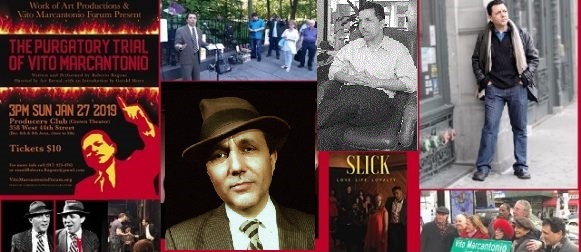 Interview by Tiziano Thomas Dossena
Interview by Tiziano Thomas Dossena
You may have seen him at the movies, or at a play, or on the Internet, or maybe in the news while giving fiery words about the life of Vito Marcantonio. Regardless, you probably had the chance to see him or hear him, since he is continuously present in the entertainment life of New York, in one manner or another. Now you’ll have the chance to hear directly from him, a true Renaissance Man, and also an impresario, about his goals, his dreams and some of his achievements, since we were able to meet for an interview.
L’Idea: Roberto, you are a versatile individual, with experience in government and non-profit, besides acting, writing, and you also find time to be an impresario and a producer. How do you find time for everything?
Roberto Ragone: The way I make time is to schedule myself by streamlining and being organic about the work I do, trying to incorporate as many as skills and interests at the same time in each project. So, for example, I focus on advancing primarily my own scripts, getting them developed into a play or film, and including character I could portray. This multi-tasking, in its totality, comprises and constitutes who I am as an impresario.
L’Idea: How do you manage to balance out the creative aspect of your life with the business one?
Roberto Ragone: The creative aspect of my life as actor, writer, and producer is becoming more of my business side, meaning I am making it an entrepreneurial enterprise from which I can earn a living. My goal is to live out my passion within my means and find ways of having a quality of life. I want to be an artist who is self-aware about the need to treat my work in the arts like a business while minimizing my compromises, and avoiding – where I can – any work that I don’t really want to do. I also do not want to be involved in projects that do not advance me since I have plenty of clips and credits on my resume. I might do something for free if someone is in a real bind, and I can cultivate a relationship with that person and/or there is a passion project I really believe in. However, I also assume that for those types of projects, I will not have to jump through hoops, meaning I will be given the role without an audition, and I can minimize my opportunity costs while doing work that has artistic integrity and is not superficially formulaic. The other factor is whether the project is giving me a principal role with “reel-worthy” scenes (more likely a lead role than a supporting role) and not a background role. I will also participate in scenarios where the producers can generate money that funds a larger project that has more financial feasibility.
L’Idea: What exactly is your consultant activity about?
Roberto Ragone: I continue to welcome consulting work. I do strategic planning and marketing. Some of the strategic planning comes in the form of brainstorming with clients and then formatting and structuring the documentation into a strategic or marketing plan, or whatever the scope of work. I may help to implement the respective plan through, for example, stakeholder outreach, social media marketing, email marketing, or event planning and implementation.
So my consulting work and production work are entrepreneurial and creative in that they use left brain and right brain skills from my prior career (in public policy, politics, and nonprofits) and from my artistic work.
However, I would prefer to focus my consulting work on writing. I don’t think many people are effective and clear writers when it comes to logic and analysis, and this can spill over to people who see themselves as creative writers (e.g. playwrights, novelists), particularly in the United States. They don’t necessarily know how to organize and articulate their thoughts linearly or methodically in the context of the piece being written. I imagine some people attribute their lack of structure or arc as stylistic, intended to prompt the audience to think. But more likely than not, it is an excuse or alibi for their poor writing or editing.
In fact, many people in this day and age do not even know how to spell and use punctuation properly. That includes even neglecting to end a complete sentence with the right punctuation and then capitalizing the first letter of the next sentence. This becomes a bit of a “negative reinforcement” motivation to forge my own path in my career, including with my own scripts.
I feel like I can help people through my “left-brain” skills, writing strategic and marketing plans but also “script doctoring” to find logic gaps in scripts or posing questions about character and plot development that a writer may need to answer to make sure the script is moving in the direction they want to go. People can lose track of the arc of their own story in the same way that people can lose track of their own premise and conclusion in a thesis even after multiple proofreads.
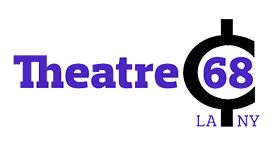 L’Idea: You were a member of the 68 Cent Crew Theatre Company. Could you tell us more about that experience?
L’Idea: You were a member of the 68 Cent Crew Theatre Company. Could you tell us more about that experience?
Roberto Ragone: A friend of mine, Chiara Montalto, not only encouraged my acting and writing, but also introduced me to the 68 Cent Crew Theatre Company. That company, founded by Ronnie Marmo, started in Los Angle and also has a chapter in New York City co-founded by Chiara.
Every week, the company would break up into smaller groups or pairs. Two or three actors would team up as team partners to prepare a scene to perform in the following class for feedback from their actor classmates observing from the audience. This is part of what’s called the Monday Night “gym.” In “gym,” the actors would “workshop” scenes, improvise, and perform cold reads, as well as write, develop, and direct material brought in by members. The actors “exercise” to keep their skills sharp for much less than the cost of a class.
My participation was brief but it acclimated me to work with a new group of actors, moving beyond whom I had worked with in the past. I was also cast in a staged reading produced by the theatre company.
By the way, I think Chiara’s one-woman show, A Brooklyn Love Story: Emergency Used Candles, about her special connection to her grandfather would be of interest to L’Idea Magazine. Chiara’s play was produced Off-Broadway at the Cherry Lane and in Los Angeles at Theatre 68. It’s currently in development as a feature film.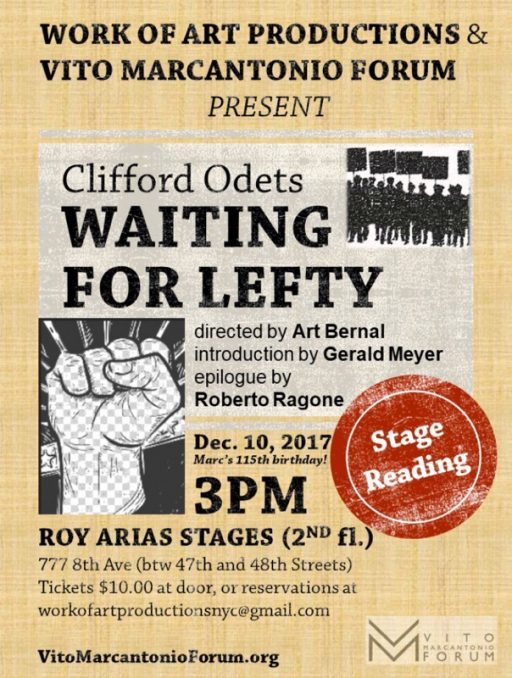
L’Idea: What about your other theatrical experiences as an actor? Which ones you feel are the most memorable?
Roberto Ragone: My performance of Felix in The Odd Couple was my first foray into performing a full script in a long time. It helped advance the comedic elements of my acting.
I later played the role of a crime-thriller author who fancied himself as a detective in the play, The Tangled Skirt. Although written in 2012, and not set for a particular time period by the playwright, the language and repartee between the male and female character – the only two characters in the play – had a very 1940s film noir dynamic. Besides overcoming the challenge of learning a lot of dialogue, including three monologues, working off only one other character (unlike in The Odd Couple), and solidifying the habit of memorizing lines, the Humphrey Bogart-esque language helped immerse me further into the 1930s and 1940s to prepare me further for the role of Congressman Vito Marcantonio.
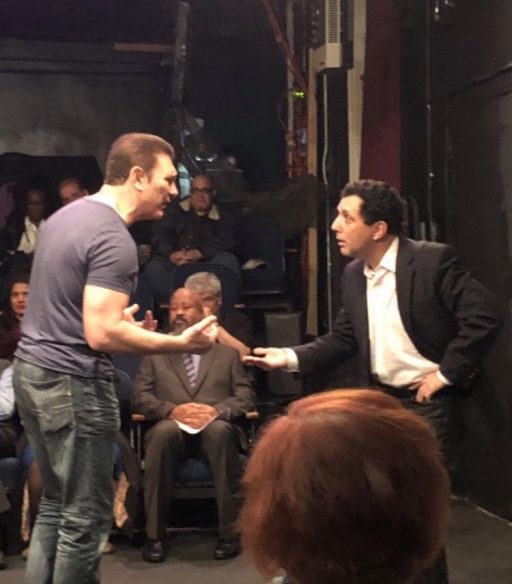
L’Idea: Who is the actor or actress who you worked with that impressed you the most?
Roberto Ragone: First, I need to acknowledge, Art Bernal, who, after playing Oscar to my Felix in The Odd Couple, put his money where his mouth is as a doer (unlike the “I’m Gonna’ Society” or the “I Should ah’ Society”). He began a production company so he can build a directorial track record, and has chosen several plays where he cast me as the lead. (We have joked about being the “Scorsese/De Niro of theatre”.) Art Bernal selected, produced, and directed The Tangled Skirt, and cast the actress, Katie Holden, who portrayed the female role. Her memorization and performance as an actress stick out for me, along with our alignment in our brainstorming, line delivery, and stage “blocking”, which was fostered by Art Bernal’s approach/methodology. Katie and I played our roles in a way that fostered a nostalgia almost called upon by the story, and I look forward to working with her again.
The actor who has stuck out is George Papadimatos, not only for his energetic and powerful acting, but because of the chemistry audiences note when we perform opposite each other in productions of my scripts, George instinctively understood the nuances of the cadences I wanted him to use in delivering key lines.
Our aligned acting with Art’s directing bore fruit. Art directed me and George in my one act-comedy, Bromance-A-Roni, to full houses at the Midtown International Theatre Festival. We won the festival award for Best Production.
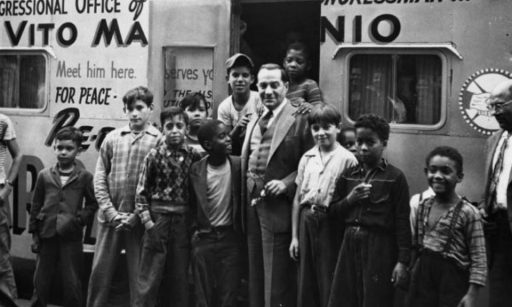
George also played former Mayor Fiorello LaGuardia opposite to my Congressman Vito Marcantonio in a film short I wrote – entitled, The Final Covenant of Vito Marcantonio – based on a scene from a full-length script, which I also wrote (entitled Vito’s Last Penance: The Vindication of Vito Marcantonio.) I had performed a theatrical version of that scene as a one-act play, and then Art suggested I make it into a film short. Art put together the production team and co-directed. When George and I performed the crescendo to the scene (of the LaGuardia/Marcantonio argument), the dynamic was so dramatically intense, that when the main director yelled “cut,” the crew broke out in spontaneous applause.
L’Idea: As a writer, you had quite a few successful plays, monologues, and comedies. You won the “Best Production” award at the Midtown International Theatre Festival with the comedy Bromance-A-Roni. Could talk a bit of that comedy?
Roberto Ragone: Bromance-A-Roni is loosely based on two comedic and lesson-learning incidents with the same set of friends. The male friend in real life, Mike Fiorito, is one of many Italian-American friends who received a college education, but remained ethnic and down-to-earth rather than elitist and pretentious. (In fact, Mike is a successfully published author whom L’Idea may want to cover.) Too often when white ethnics are portrayed as both ethnic and educated, they are either Irish, Polish, or Jewish. Italian Americans are portrayed as though operating under some kind of Manichean dichotomy. They are either hyper-ethnic and/or “under-educated” and “under-articulate” or, if they are articulate with an Italian last name, their ethnicity is marginalized to irrelevance. Otherwise, if they are ethnic and educated, it is a mask disguising wrongdoing.
My writing attempts to turn those notions on their head with a paradigm shift portraying articulate and insightful Italian Americans who discuss substantive topics in a comedic or ironic way while maintaining the cadences and delivery of the “old-school front stoop.” This is my value proposition, and audiences have told me they like the natural authenticity and intimacy of my characters. By coincidence, this also aligns with how I portray LaGuardia and Marcantonio and some of their contemporaries in my scripts about the Vito Marcantonio saga.
It certainly helped that Art Bernal and George Papadimatos were involved with Bromance-A-Roni. It seems that during the Midtown International Theatre Festival, the festival publicist reveled at selling the logline and promotional pitch of my play: a modern combination of Abbott and Costello, the Odd Couple, and Italian-American Woody Allen, with a touch of Bugs Bunny.
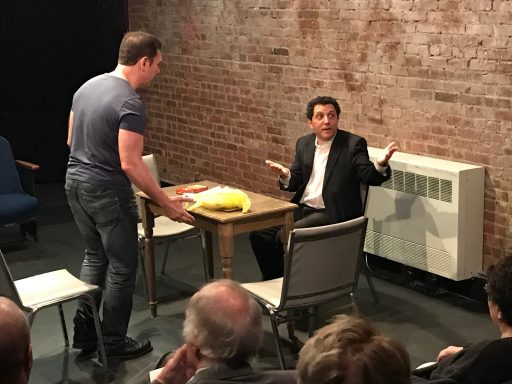
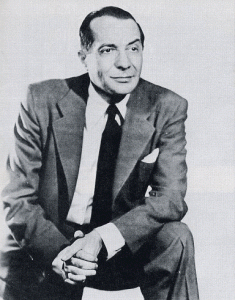
L’Idea: You seem to be fascinated with Vito Marcantonio. What triggered your interest originally? Could you tell us the difference between The Purgatory Trial of Vito Marcantonio and the monologues?
Roberto Ragone: I experienced a series of coincidences between 1986 and 1992 where Vito Marcantonio kept recurring in my life. The first time was when learning about him in an African-American history class in how he fought against the poll tax and lynchings. Then in the summer of 1986, I was accompanying a high school friend’s mother, who was Caribbean American, through East Harlem and she stopped, cited a building, and wondered whether that was where Vito Marcantonio used to have his office. I said, “You know of Vito Marcantonio?” Her reply was: “Yes, and he helped my family.” Then two years later I came across Maria Laurino’s article in Village Voice critiquing how Governor Mario Cuomo failed to meet the standard of Italian-American progressivism set by Vito Marcantonio and his two mentors, Fiorello LaGuardia and Leonard Covello.
Then that fall of 1988, I was at a meeting of the FIERI organization, founded and led by John Calvelli. John would become one of the most illustrious, articulate, and visionary leaders of the Italian-American community (as well as the environmental and cultural community, spearheading One Percent for Culture and elephant preservation campaigns, as Executive Vice President of the Wildlife Conservation Society), worthy of future focus by L’Idea. John announced at a FIERI meeting, that September 1988, that he heard Al Pacino might play Vito Marcantonio in a movie. I bet almost everyone in the room was excited by the prospect of a new Al Pacino project without knowing who Vito Marcantonio was. (That film was never produced.)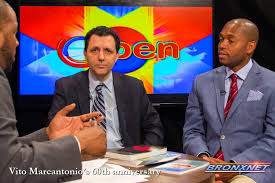
Finally, in 1992, I was invited by an Italian-American college friend, Stephen Cancian, to his wedding. (I did not anticipate Steve or anyone else in California to invite me to a wedding other than a high school friend married the prior year. I asked my mother to read the invitation carefully over the phone to me, and when she pronounced Steve’s name in Italian, I was pleasantly surprised.) The night before the wedding, the guys went out and, since we were all political junkies, we began to discuss current events and leadership. Steve then said when he comes back from his honeymoon, he is going to mail me a book about an Italian American leader with a unique management style who would talk to people directly for a few minutes before referring them to staff to deal with the details. I asked the name of this personage, expecting to hear the name of a business leader. When he said, “Vito Marcantonio,” I said, “You too? I can’t believe how this name keeps coming back up in my life.” When he returned from his honeymoon, he, unlike many people in this world, followed through on his promise, and sent me Dr. Gerald Meyer’s book – Vito Marcantonio: Radical Political (1902-1954).
In 1996 after 10 years of coincidences of Vito Marcantonio reappearing in my life, I met Dr. Meyer. We set out to organize the largest event ever on the late Congressman – a multi-media event organized two years later with FIERI, the NYU Circolo Italiano, the National Italian American Foundation, and the John D. Calandra Italian-American Institute, attracting over 400 people at the student center of New York University, where Marcantonio had gone to law school and had founded a university-level Circolo Italiano.
Then came Dr. Meyer’s definitive observation: “We can’t let this event occur in isolation. This needs to be part of a larger campaign to educate the public about Marcantonio with a multi-disciplinary approach.”
Of all the goals that Dr. Meyer enumerated off the top of his head, the artistic-related goals resonated the most with me; I choose to concentrate on achieving these objectives: a feature film, a full-length play, and a documentary. These would then include dramatizations and a one-man show.
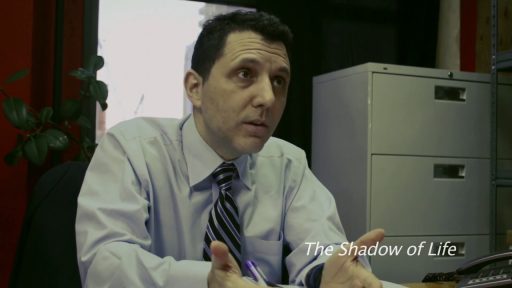
Some of the aims of our prospective campaign were being achieved along the way, such as walking tours of historic landmarks of Italian Harlem and El Barrio – where Marcantonio lived his entire life and succeeded his political mentor as Congressman after he helped elect LaGuardia Mayor of New York City in 1933.
Then, in 2011, that list of goals became part of the Mission Statement written as the Preamble to the Constitution of the newly-founded Vito Marcantonio Forum (VMF) – a cultural-historical community based organization that brings together people, from a wide variety of backgrounds, dedicated to disseminating and sharing knowledge of the life and work of Vito Marcantonio and his mentors, Fiorello La Guardia and Dr. Leonard Covello. The VMF has striven to correct the historical record, which most often has ignored or misrepresented Marcantonio’s unceasing work on behalf of those left out of the American Dream The VMF applauds his courageous fight for a more authentically democratic country and offering a valuable important frame of reference for coalition-building. To date, the VMF has fulfilled its mission by: organizing book presentations; book circles; screenings of documentaries; and walking tours. In addition, the VMF has co-produced plays, as well as organized commemorations and awards dinners.
Dr. Meyer and I would be voted in as Co-Chairs, Maria Lisella – who also leads the Italian American Writers Association – would be voted in Vice Chair of the VMF, and Adam Meyer as Secretary/Treasurer.
Other goals would be steadily accomplished, including the naming in 2017 of the northeast corner of the intersection of East 116th Street and Lexington Avenue, “The Vito Marcantonio Lucky Corner,” thanks to New York City Council Speaker and Councilwoman of East Harlem, Melissa Mark-Viverito. There is a photo of a bird perched on the sign during the ceremony, which many of us concluded was harboring the soul and spirit of Marcantonio to witness the event.
One year after that, the Vito Marcantonio Forum was being invited to participate in a Conference in Picerno, Italy – the town where Marcantonio’s family originates in the province of Potenza in the region of Basilicata.
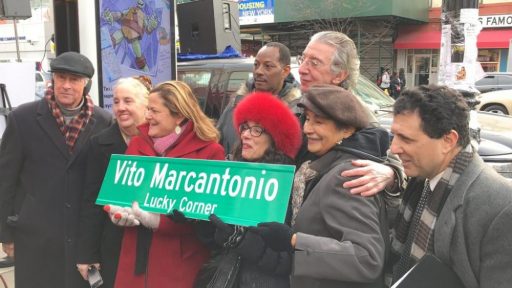
For me, ever since the time I and Dr. Meyer were planning the large 1998 event at New York University – there was a sense of “if you build it, they will come” – a quote from the film, Field of Dreams, a title symbolically important to the efforts of the VMF.
Now the Vito Marcantonio Forum and the work of its members have become transnational. Matera, a city in the region of Basilicata, Italy had been chosen as the European City of culture for 2019. The Matera Foundation had provided an opportunity for local towns in Basilicata to apply for funds to host cultural events.
The local government of Picerno, led by Mayor Giovanni Lettieri, and the Deputy Mayor, Giusy Marisco had obtained funding to organize a three-day conference that would include academic and artistic presentations about the life and times of Vito Marcantonio, related themes in Italian culture and history, and the Congressman’s continued relevance to the United States and Italy today.
Funding included bringing in two members of the Vito Marcantonio Forum to participate. The VMF selected Gary Bono as one of the representatives, who had begun to actively participate in advising the organization and serving informally in administrative roles on top of his participation in the People’s World and in running a company that republishes renowned books related to the political Left.
The VMF selected me as the other representative, as a VMF founder member and co-chair, who had begun to focus my own career on acting, writing, and producing, and had been making Vito Marcantonio my magnum opus project. I had recently performed my one-man show to a sold-out crowd (with requests to perform in other cities) a couple of months before the plans were finalized with the municipality of Picerno for me and Gary Bono to attend the Conference.
My dramatizations typically consist of my reenacting particular speeches or remarks by Vito Marcantonio (with some tweaking). My one-man show consists of a performance piece I wrote where I portray Vito Marcantonio making a case as to why he does not belong in Purgatory – thus, the title, The Purgatory Trial of Vito Marcantonio. The setting of the trial is at the Lucky Corner (East 116th Street and Lexington Avenue in Manhattan).
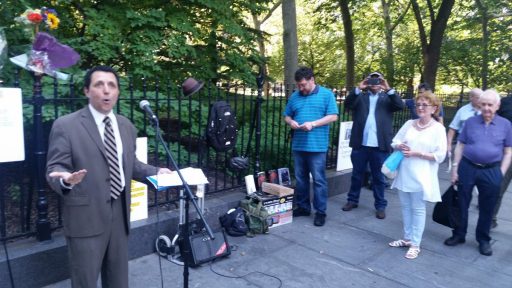
The full-length play and cinematic production are entitled Vito’s Last Penance: The Vindication of Vito Marcantonio. There is also a film short, as mentioned, in post-production of the most workshopped scene (performed also as a one-act play, and protected in the copyright of the full script) where Marcantonio must persuade his semi-retired and semi-reluctant mentor, Fiorello LaGuardia, to stick his neck out and endorse him for Congress in a nation becoming more reactionary under President Truman; and where we learn LaGuardia’s stake as an opposition leader against the Establishment could be jeopardized if he supports Marcantonio. This piece is entitled, The Final Covenant of Vito Marcantonio.
Notice these titles have religious connotations partly because Marcantanio’s death, as in the death of Sacco and Vanzetti, can be evocative of The Passion (of Jesus). This is particularly notable with respect to Marcantonio because he is the only Catholic politician in American history who has been denied a Catholic burial.
I am particularly proud of how the people of color in my life have taken up the cause of advancing the story of Vito Marcantonio. I recall the late Morgan Powell, an African American member of the Vito Marcantonio Forum, who, in 2014, reached out to a Latino gentleman who hosted a show on cable about getting us on the program at the last minute to discuss our (at the time) upcoming commemoration of the 60th Anniversary of the death of Vito Marcantonio.
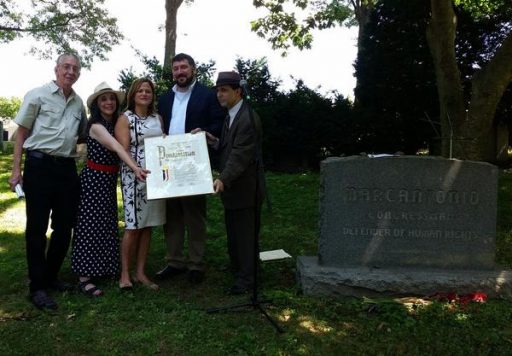
Art Bernal, who is Mexican American and who co-produced and co-directed, “The Final Covenant” short, brought together an experienced and enthusiastic production team consisting of Karen Torres, producer of Puerto Rican heritage; Justin Bennett, the main director, who is African American; Xavier Campo, director of photography, who is Columbian; Juan Fullada, sound technician originally from Peru; and the makeup artist – who transformed me into Marcantonio and George Papadimatos into LaGuardia – Serica Bell, who is Caribbean American. George is Greek American and Brytanie Holbrook – who portrays LaGuardia’s second wife, Marie, whom he dated and married after his first wife passed away from illness – is Finnish and British descent.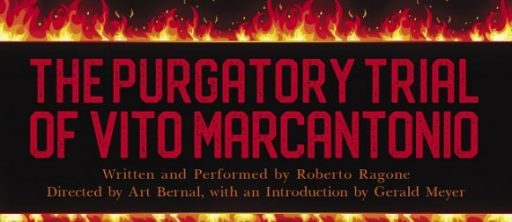
L’Idea: Do you plan to bring The Purgatory Trial of Vito Marcantonio on the road?
Roberto Ragone: As I was planning the performance of the one-man show in New York City, and as result of my initiating an inquiry or being approached by those who would not be able to make the Manhattan performance, the question was posed: “when are you going to bring it over to x, y, or z city. Some people would suggest a venue and/or offer to produce the show either because they were willing to take the initiative or step up after Art and I explained our financial and logistical constraints, like room and board.
Those areas of interest added up to Boston, Philadelphia, Los Angeles, Chicago, Austin, Troy, New York, and parts of Florida.
L’Idea: You also played lead roles in some movies and I am sure our readers would like to find out more about that… Which movies were?
Roberto Ragone If you don’t mind, I would be pleased to include the link to a brief film demo reel – https:://youtu.be/PhZ-bDBR2k4 – which was edited by the great documentary filmmaker, Anton Evangelista, whose credits include Umberto E, a moving documentary about his father – with a title evoking the classic Italian film, Umberto D – along with a documentary about the great poet and author, Daniela Gioseffa, and most recently, Il Signor Jackson, about the life of Edward Jackson, the prominent African American educator of the Italian language and culture. I hope L’Idea takes an interest in Anton’s work and Edward Jackson’s contributions.
My Casting Networks resume has the most comprehensive gathering of my credits, clips, bio, skills, and projects: http://www.castingnetworks.com/RobertoRagone

L’Idea: How did that experience compare with the theatrical one? Any other movie in preparation, yet?
Roberto Ragone: The theatrical experience helps sort out which actors take the responsibility of memorizing their lines and following directions. If you can do theatre, then film becomes easier. However, the theatrical experience calls for a projection of yourself to an audience whereas cinema requires a subtlety for the camera.
I am trying to raise money for different projects where I play a lead role. In one film, I am an undercover investigator trying to destroy a child trafficking ring. The film also attempts to raise awareness about this international issue. In another project, a mystery horror film – entitled, Where Evil Lurks, written and directed by Stephen Corr, I play a detective investigating the link between a cult to a murder. And of course, in the case of Vito Marcantonio, I am hoping that a “road show” of the one-man show will generate interest in the production of the 105-page version of the full-length play Off Broadway. (There is a larger version of the script for theatre and adaptable for an epic film or mini-series.)
L’Idea: Are you working on any new project at this time? … Maybe a book, maybe another play?
Roberto Ragone: My projects seem happily endless based on the scripts I am writing. I feel fortunate that I do not have mental blocks. I don’t suffer from the problem of procrastination in terms of writing. Ironically, when I delay writing, the story and dialogue keep building up in my head to the point where I have to write them down, or I become less productive in other areas or even weighed down. One particular example of such a challenge was when I was in the middle of the rehearsals and preparing for the performance of Bromance-A-Roni during the Midtown International Theatre Festival in 2017: a new comedy was emerging in my head that would also serve as a tribute to Jimmy Durante. I have since edited several drafts of that play.
Ultimately, I don’t need to be part of a writing pool to get ideas or sort out logic gaps. I ask people who are personal or professional peers about whether the logic for a particular moment is clear versus whether more spoon-feeding is necessary. I might ask whether it is better to say a sentence a particular way versus another sentence structure, or which character should be designated to deliver a particular line of punchline. The challenge is making the time to edit these scripts and complete them for a production given the other things I need to do as an actor to advance my career and earn income.
I would also like to see some of my “left-brain” published essays that critique current events and analyze them in the context of historical figures, including political and cultural figures and forces in an interdisciplinary manner. For example, I have drafted an essay about Vito Marcantonio that I am trying to get published that also speaks to current affairs.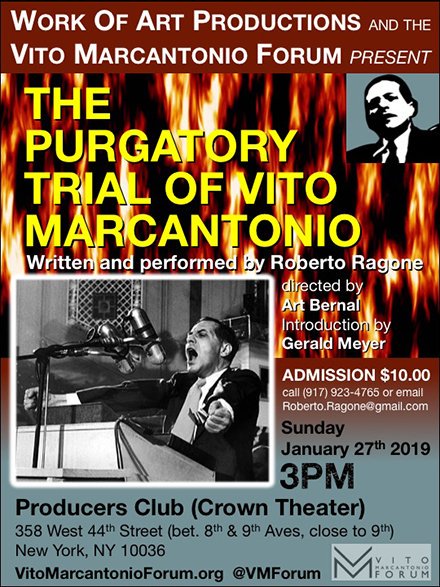
L’Idea: Roberto, did your Italian roots influence you as an artist? And as a man?
Roberto Ragone: There are a few factors in my Italian roots that drew me towards my Italian heritage and the artistic expression of that heritage through the arts as an outlet – for someone like myself who feels closely connected to and contemplates that heritage.
My high school sophomore social studies teacher, Judith Katz, enthusiastically and energetically taught me about what one might describe as the three Rs of the Italian heritage: Rome, Renaissance and Risorgimento. This instructed me to look beyond the three Fs of Italian culture that Americans typically appreciate: food, fashion, and fine arts.
On top of that, my father was the typical hardworking Italian immigrant earning money to advance his family. My father seems to be the archetype of the lively, vivacious, animated, charming, entertaining, and joyful “Napoletano,” since he is from Salerno, which is in the same region as Naples. Once, when I saw him watch Luciano Pavarotti sing on TV, I seemed to be looking at the face of a man saying to himself, “that could have been me.” It turns out my father sang, performed in theater, and even danced. There were stories about friends in his paese (Teggiano) – in an agricultural area – taking turns hosting gatherings at their homes, playing vinyl records on the record player. And the young men would walk up to the young woman, and ask them to dance. After the dance was over, the young men would walk up to their peer (my future would-be father), who was the authority and the expert, and say in Italian, “Uuayy! Arsenio, com’ agiu’ fatto? Agiu” fatto bene?” (“Arsenio, how did I do? Did I do okay?”)
This information would help me make an “informed choice” in determining that it would be the right thing to leave the world of politics, public policy, and nonprofits and commit myself to acting, writing, and producing. I had always imagined comedic or dramatic dialogues and how the lines would be delivered, and even occasionally how to direct a scene. I had even found myself critiquing acting performance, a script, or a director’s choice as far back as my youth. I would also sometimes imagine myself hosting, emceeing, or moderating discussions on stage.
I prefer to be in a situation where I offer a unique value proposition that can have a positive, constructive, and even transcendent impact, rather than be one among many, serving a role where I’m easily interchangeable with someone else.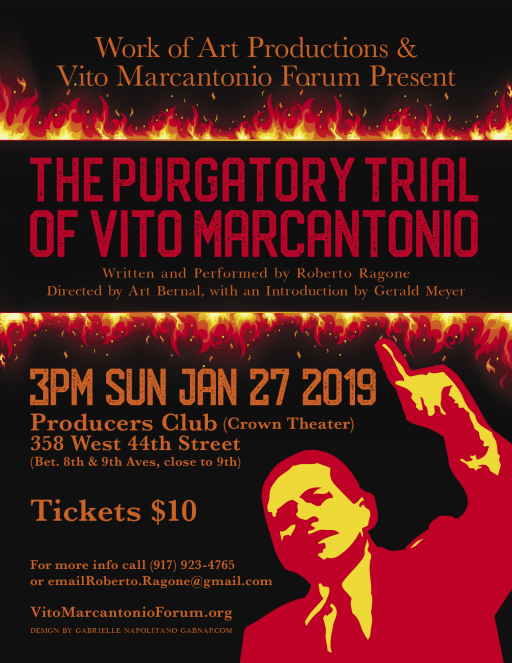
L’Idea: Any message for our readers?
Roberto Ragone: I would want to make an appeal not only to the 17 million people who identify themselves as having Italian heritage, but also Italophiles. In fact, I also make an appeal to people to learn their ancestry through services that teach how to reconstruct your past in order for them to discover if they have any Italian heritage. If one has Italian heritage, I would suggest taking advantage of the “Italian blood” proviso in Italian law guaranteeing you citizenship. This might be a modern version of how Europeans used to contemplate (and maybe still do in their collective unconscious) how they were all once part of the Roman Empire. Throw in the fact that Italians perhaps experienced the second largest Diaspora after the Jewish people, and you’ve got a Pan-Italia that can create a new Pax-Romana.
A connection to Italy through a visit to Italy is like a baptism that helps one begin to transcend the American social construct of being white. You began to appreciate a nation that has a rich cultural history and offers frames of reference and models, in the law, engineering, design, and other aesthetics as well as the culinary arts and sartorial splendor of clothing. fabric and swatches. (A recent survey found that people identified Italy as the most “beautiful” country in the world.)
However, through my appeal (and any “baptismal visitation” to Italy), I hope interest in Italian history can prompt interest in Italian-American history and how that history in the form of phenomena can serve as public policy case studies offering insights on how to address contemporary problems in leadership (through LaGuardia and Marcantonio), education (through Dr. Leonard Covello and Dr. Maria Montessouri), law enforcement (through NYPD Lt. Joseph Petrosino); customer-oriented banking and finance (through A.P Giannini); equitable capitalism (through Pareto principals of economics), and public health (through the Roseto Effect).
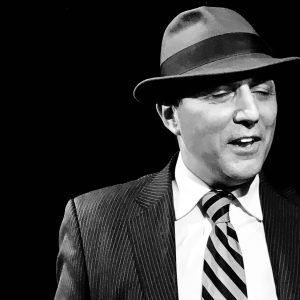 While there is an understandable request for sensitivity and “safe space” in American society, it is ironic that people, including the people who advocate for sensitivity and space, don’t seem to grant these prerogatives to Italian Americans, and others who appreciate Italian culture and history. In fact, there seems to be no problem with the notion of non-Italian Americans depicting or approving the depiction of the Italian-American experience as one where all the bad guys are of Italian heritage and all the good guys are non-Italian American. This irony is enhanced by the fact that Italian-Americans served in higher proportions than any other ethnic group against the Axis Powers. Italy protected a higher proportion of its Jewish population (85 percent) against the Holocaust than almost all other European nation. While the death of 15 percent of the Italian Jewish population underscores the tragedy of the Nazi genocide, it reflects the heroism of the Italians to rescue, hide, and save it’s Jewish population from extinction. It is my understanding that a study showed that if you were to ask Jewish Europeans in many parts of your Europe, “what are you,” – meaning what is your heritage – they would say, “Jewish.” However, in Italy, they would say they are “Italian.”
While there is an understandable request for sensitivity and “safe space” in American society, it is ironic that people, including the people who advocate for sensitivity and space, don’t seem to grant these prerogatives to Italian Americans, and others who appreciate Italian culture and history. In fact, there seems to be no problem with the notion of non-Italian Americans depicting or approving the depiction of the Italian-American experience as one where all the bad guys are of Italian heritage and all the good guys are non-Italian American. This irony is enhanced by the fact that Italian-Americans served in higher proportions than any other ethnic group against the Axis Powers. Italy protected a higher proportion of its Jewish population (85 percent) against the Holocaust than almost all other European nation. While the death of 15 percent of the Italian Jewish population underscores the tragedy of the Nazi genocide, it reflects the heroism of the Italians to rescue, hide, and save it’s Jewish population from extinction. It is my understanding that a study showed that if you were to ask Jewish Europeans in many parts of your Europe, “what are you,” – meaning what is your heritage – they would say, “Jewish.” However, in Italy, they would say they are “Italian.”
There also seems to be no problem with selectively determining who is a good guy and who is a villain in history. And this is not done through facts and truths but through fraudulent and fabricated propaganda. So someone like a Christopher Columbus, who did not mistreat people of color who were minding their own business or whom he befriended, has been demonized as a poster child for evil. Meanwhile, latter-day leaders who should have known better, but instead perpetrated, permitted or perpetuated, violence against people of color, unprovoked by people of color, get to remain lionized heroes, including Winston Churchill, Charles de Gaulle, Thomas Jefferson, and Andrew Jackson. And while Alexander Hamilton has been underappreciated compared to Thomas Jefferson, he has perhaps been more exonerated that he should be. In fact, it is ironic that there are people out there who couldn’t pass a test about basic American history (or get a lot of questions wrong), who couldn’t tell you the significance of July 4, 1776, and/or don’t know what happened in American history over the past 20 years – much less over the past 50 years – that may have adversely affected their lives. But some of these same people think they are suddenly experts about 1492.
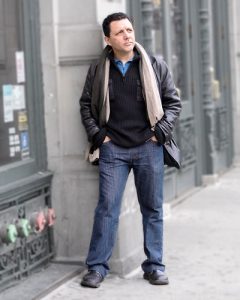
In contrast, America’s Founding Fathers were introspective about the significance of the ancient Roman Republic and the need for representational government. The Founding Fathers knew that Rome was a blueprint, not just for buildings the same architectural style in Washington DC, but for “form[ing] a more perfect union,” as written in the Preamble of the Constitution. In fact, prior to the Constitution, in the drafting of the Declaration of Independence, the words, “all men are created equal” came to Thomas Jefferson from his friend, the Italian humanist, Filippo Mazzei. Thus, Jefferson’s “Italo-filialism” extended beyond naming his home Monticello. Unfortunately, the Founding Fathers were not sufficiently introspective to apply these notions to African Americans and Native Americans. One can argue that the Romans were more enlightened in their time, and Columbus in his time.
Because of the contributions of Italians and Italian Americans towards shaping among the best aspects of the United States of America, they are more worthy of respect. At the same time, Italians, Italian Americans and Italophiles need to become more introspective of themselves as transcendent bridge builders between cultures. In contemplating the Pan-Italia and new Pax-Romana I mentioned earlier, I always imagined myself giving a speech identifying a modern Medieval “philistinism,” and then urging change by exhorting people of Italian descent with the following: “Let us be able to claim now what can be claimed around 500 years ago – that a Renaissance has descended across this continent…and it began…with the Italians…thank you very much!”


